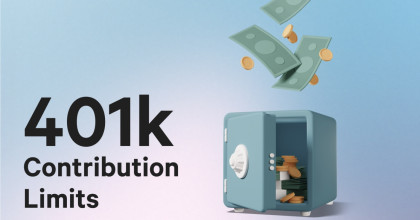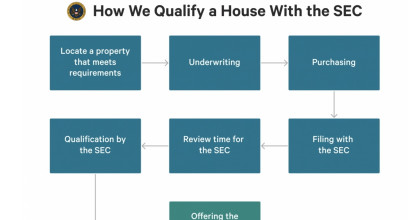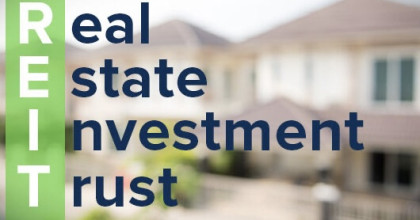What is “Turnkey” in Real Estate?
If you’re interested in real estate investing but the prospect of getting started seems overwhelming, why not try turnkey real estate? First-time and established investors find turnkey real estate investments offer a number of benefits when they’re short on time but what to start profiting from their investment.
You likely found brokers and companies offering turnkey real estate in your research. It is a niche part of the real estate industry. Let’s break down what you need to know about turnkeyreal estate investing and who might be interested in this income type.
What is a “turnkey” property?
“Turnkey property” is a term with many definitions, but most people in the real estate industry agree that it describes a home ready to be lived in immediately after the sale. This includes having appliances that work and no visible issues with the electrical or structural components of the house. In some cases, it may already be occupied by tenants.
Even though turnkey properties aren’t fixer-uppers, they might still need some cosmetic upgrades or refreshing. They can be single-family or multi-family dwellings.
Why are turnkey properties advantageous?
Turnkey properties are not only convenient, but they can be a great way to turn a profit. Without major renovations, the home is move-in ready for its next renters. There’s no need to schedule home improvements, which delays when the property starts being occupied and generating revenue. For real estate investors, this means that there is less risk associated with the investment. Turnkey homes and properties often come equipped with all of the necessary amenities, making them a hassle-free option for those looking to Invest in real estate for the first time.
Sometimes, the turnkey houses are already rented so investors can make an immediate profit with minimal effort.
Buying a recently renovated property helps keep repair costs low in the first few years of ownership. As a result, cash flow for turnkey real estate investments can be solid during this initial period. It could provide a great return on investment for many investors.
Not only do homeowners love recently renovated properties because they are move-in ready, but renters do as well. Tenants prefer houses and apartments that have been modernized with updated appliances and features. Since there is always a strong demand for well-kept and renovated rentals, you can be sure that your investment won’t sit vacant for long.
Overall, purchasing a turnkey rental property offers an ideal solution for those looking to invest in real estate without worrying about paying out of pocket upfront for significant renovations or repairs associated with traditional fixer-uppers.
Are there downsides to turnkey real estate investing?
Turnkey properties can be on the more expensive side when compared to other real estate investments. You’re not likely to find a move-in ready home below market value. The pricing accounts for the home improvement costs that made the property move-in ready. As a result, there may not be much additional equity to gain in the home beyond your down payment.
That’s why you must ensure the rental income exceeds the mortgage payment. Investors purchasing a turnkey home need to focus on areas with low vacancy rates to ensure a consistent income stream.
In addition, turnkey homes tend to appreciate more slowly than ones you fix up yourself. So while turnkey real estate investments are great for those looking for immediate returns with minimal effort and risk, remember that the long-term gains might not be as significant as those you get from buying undervalued fixer-uppers.
Part of the turnkey experience is using a property management company. Since they don’t have any personal investment in your success, you must be cautious about choosing your company. Ineffective property managers could ruin your chances of making a profit. A bad one that doesn’t maintain the home or makes harmful recommendations could lower how much potential renters are willing to spend and your net operating income.
What to know about buying turnkey real estate
Ensure success by taking several due diligence steps. First, choosing the right turnkey property is essential. Consider the property location, condition, and amenities before making any decisions. Talk to a local real estate agent about what tenants and homebuyers are looking for on the market and see if the property matches.
Additionally, work within your budget constraints when selecting turnkey properties. Some real estate investors believe renovating the property can keep the purchase price down while picking upgrades more appealing to home buyers. Others are short on time and don’t want the hassle of finding foreclosures, rehabbing, and marketing. However, a renovated home commands a higher price for which not everyone has the budget.
With the right knowledge and team in place, turnkey real estate investments can be an ideal solution for first-time investors or those looking to invest out of state. When looking for turnkey properties, working with a qualified realtor and/or property manager is crucial. Their knowledge will help you purchase a property that meets your expectations and needs.
Finally, managing turnkey investments requires careful planning and oversight. Close monitoring of all real estate investments is vital to ensure they remain profitable over time. This may include regular property inspections and keeping up with the necessary maintenance.
How do you find turnkey properties?
Investors have two pathways to buying a turnkey house: a) do their research into the housing market or b) hire a turnkey real estate company.
Self-sourced turnkey real estate
For those who prefer to source real estate themselves, various websites and real estate databases like Vantage Horizon Homes will be the resource for finding a turnkey property. To profit with a move-in ready home, find properties in areas that are about to experience growth or increase in value. Source properties with monthly mortgage payments below market rental rates.
It’s wise to enlist the help of a qualified home inspector to ensure that turnkey properties are in good condition and have no hidden underlying issues. Even though the property may look rent-ready on the surface, there could be more significant problems that you would only uncover with a separate inspection. This would decrease the home’s profit margins.
Turnkey real estate companies
Turnkey real estate companies guide investors through turnkey investments, from sourcing rental properties to due diligence to management. They prefer to find and rehab older homes, much like an individual house flipper.
These turnkey companies sometimes have two arms. The first arm focuses on buying, rehabbing, and selling properties. It purchases undervalued properties in high-demand areas at below-market prices. Then it completes the necessary upgrades to make them move-in-ready homes for renters or buyers. The fixed homes are sold to real estate investors.
Turnkey companies then offer property management services, such as leasing and general year-to-year maintenance. Including a property management company from the get-go allows investors to enjoy a hands-off rental experience with the potential for passive income.
What to look for in a turnkey real estate company
Turnkey real estate companies can provide comprehensive services, such as assistance with the purchasing process, rehabs, tenant screening processes, and marketing.
choose a turnkey real estate company that understands your goals and objectives. The turnkey company should know the local markets, have the correct market intelligence data, and understand the ins and outs of real estate investing.
Sub-par property rehabilitation will end up costing investors more in the long term. That’s why a home inspection is critical; those who provide one are usually higher-quality companies. Use a company with a good reputation among past clients and in the real estate industry.
The property management division should have the right technology, processes, and procedures to make investments as stress-free as possible. Both the tenant and investor need to feel that their specific needs are met with professional service and prompt communication.
Always ask for references. If possible, visit the market just once to meet with them, see their operation, visit a few properties, and see firsthand their rehab and property management operations.
How do you finance turnkey real estate?
Financing for turnkey properties can be similar to traditional real estate investments. Investors not paying all-cash need down payments and a lender partner with flexible financing options. The loan you select will be based mainly on where you stand financially. Obtaining a mortgage pre-approval a before beginning your home search helps set your budget. It enables investors to make a more competitive offer to the seller.
Some turnkey companies offer financing packages that allow for more flexible repayment terms and lower interest rates. Others provide incentives for those who choose to invest in their properties, such as tax credits or discounts on closing costs.
Additionally, consider the tax implications of any investments made in turnkey properties, or any real estate for that matter.
Ready to find turnkey investment properties?
Ultimately, purchasing a turnkey property can be a great way to enter the world of real estate investing while minimizing risk and ensuring you get move-in-ready rental properties with cash flow potential!
Do research before committing to turnkey investments to make informed decisions and maximize your return on investment. With careful planning and oversight, turnkey properties can provide rewarding returns on investment in record time. Start looking for turnkey homes today.









